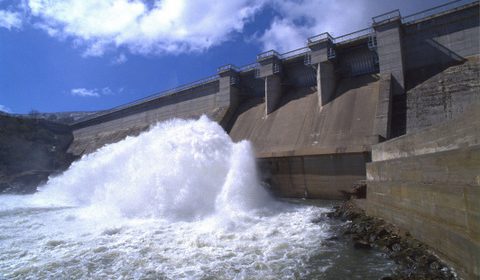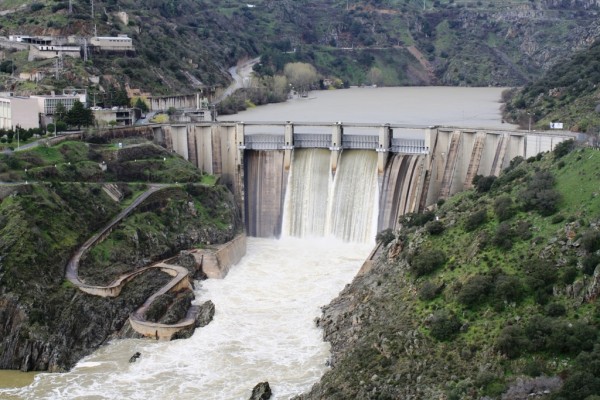HOW CONDITION RESERVOIRS ELECTRICITY PRICES?

The contribution of hydropower varies in its sole discretion, although they are among the plants that can further lower the receipt. The dams built in  the second half of the twentieth century are more central role in the adjustment of electricity prices in a liberalized market as the twenty-first century. Although these facilities do not represent the greatest source of light -raro production is the month in which contribute 15% of the system-, market performance and the ability of the companies that manage them have become a strategic tool to bring energy prices, which citizens realize when they get the electricity bill.
the second half of the twentieth century are more central role in the adjustment of electricity prices in a liberalized market as the twenty-first century. Although these facilities do not represent the greatest source of light -raro production is the month in which contribute 15% of the system-, market performance and the ability of the companies that manage them have become a strategic tool to bring energy prices, which citizens realize when they get the electricity bill.
The more rainfall is recorded, the higher the level of the reservoirs, the better the conditions for turbines work and can lower the cost of electricity, a concept that affects 35% of the bill compared with 65% of fixed terms (power, taxes, etc.). A more renewable production (more wind and, in turn, solar hydro) lower cost. Although Carlos Solé, Head of Energy Regulation KPMG partner in Spain, says that in addition, «we must retribuirlas with a supplement that moves to the regulated part of the bill.» That’s the theory, at least in regard to the mills when raging wind and photovoltaic panels in the months of extreme heat. But in the case of wetlands, rain does not always correspond to a higher level of employment and production, and thus lower prices.
While generating in other plants (nuclear, thermal, combined cycle, coal, cogeneration and renewable) is very well conditioned to regulation or to the weather, the reservoirs «are the most powerful tool to exert more power market «, says Jorge Fabra, president of the organization Economists Facing the Crisis. The expert explained that hydroelectric «have the ability to instant start and begin to work when they want, without thereby losing money.»
This discretion brought last November to the National Commission on Competition and Markets (CNMC) a fine of 25 million euros to Iberdrola noting «atypical situations,» though no manipulation in the production of its plants in the Douro basin, the Sil and the Tagus at the end of 2013. The regulator claims that the company raised the price on its core just before being fired rates. The company has appealed this decision and states that did not benefit from this performance ‘having no ability to increase prices for lack of a dominant position. » The price «is the result of a matching process that follows the rules of the market», he says. The final decision will now depend on the courts.
Daily, the price of electricity is fixed at an auction where all producers involved. It is part of the energy source that has the highest operating costs-usually, cycles combination-, and then the other plants are incorporated. «The cost of hydropower is close to zero, because water does not cost money,» states Jorge Fabra. «But these facilities do not offer zero, but cheaper than the most expensive Central penny,» he says. Namely, «the supply of hydropower production is not the cost that involves the central, but by the opportunity,» he says.
Jorge Morales clarifies this fact: «Companies have the stored water and know that if they offer electricity because suits them economically, can sell the other day that the price of energy could be higher.» He notes that «this kind of plants are very important because they allow smooth the cost of light with more generation.» Although he says he also «they can increase» if they cut their production.
The telcos remember that in the end, companies are seeking to have the greatest benefit as any other private. And the law allows. Indeed, Carlos Solé recognizes that «are free to manage the use of water for electricity generation.» But he adds that the decision to do «is based on whether they should use water at a certain time to receive the appropriate remuneration, or save for the future is paid at a higher price.»
Statistics show that the use of water is different even with the same weather conditions on the table. The evolution of prices, the level of reservoirs and dams providing consumption light provide different realities. For example, in March 2015, one of the rainiest last year and about 85% reservoirs, hydropower accounted for 17.2% of the electricity needed for consumption. And the cost of electricity fell to one year lows, at 43 euros per megawatt / hour (MWh). However, with the dams to 69% in August and low rainfall, they accounted for 7.6% of energy. And the monthly cost of 55 euros.
However, this rule is not always true. In December 2014, a period that was not particularly rainy and reservoirs below the levels of 80%, hydroelectric contribution exceeded 15%. A month later, with more rain and higher capacity, electricity reservoirs dropped to 10% of the total to cover consumption needs.
In any case, there are limits set by the River Basin to the swamps are not left without resources and not too much water to accumulate heavy rains. In winter «will be left to hold quieter summer avenues capacity», explained from the Tagus River Basin, a basin in which are some of the main hydraulic jumps Peninsula. The agency recalls that «every concessionaire is free to use water according to their interests», although there are constraints: demand that has Mains and respect for the ecological flow of the river itself.
You still need to add additional water needs of a reservoir: from serving as support for nuclear power plants which are located in areas of high ecological value as well as those with priority applications like supply or irrigation. «The plants can use water indiscriminately over a year, provided they do not exceed the margins each month make» the rules outlined in the CHT. In the Confederation of Duero claim that the minimum flow rate «depends on the type of turbine and is usually set at 20% or 25% of the capacity» of the river in question.
